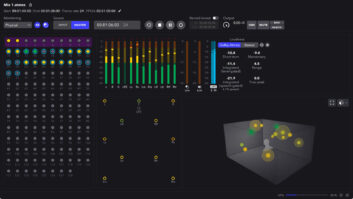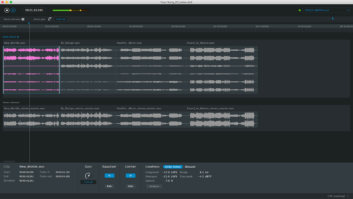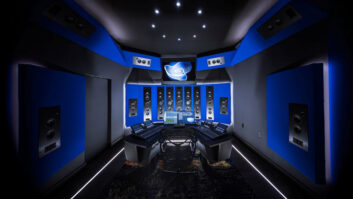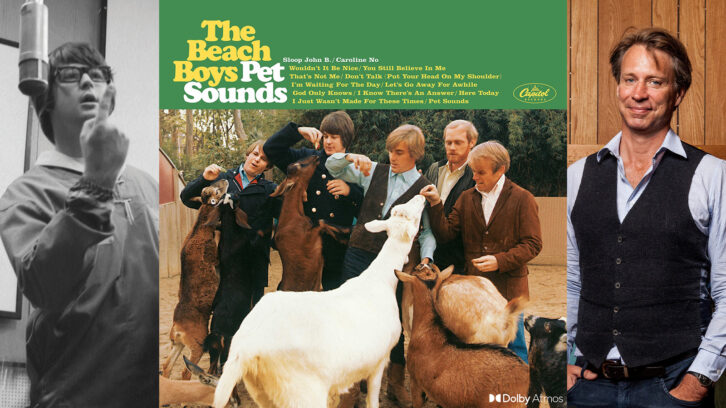
New York, NY (June 2, 2023)—Having remixed a slew of classic Beatles and Rolling Stones albums for Dolby Atmos in recent years, perhaps it was only a matter of time until Giles Martin was invited to give the same deep, immersive treatment to The Beach Boys’ 1966 magnum opus, Pet Sounds. Released today on Apple Music, Amazon Music and Tidal, Martin’s new mix takes the ambitious album spearheaded by Brian Wilson, a musical genius with hearing in only one ear, and expands it to fully engulf the listener in its sparkling highs and melancholy lows, all while staying true to the song cycle’s original sonic imprint and artistic intent.
Speaking earlier this week to an industry audience at Dolby’s New York City offices, Martin discussed the Atmos process, the mixing philosophies he’s developed while bringing classic catalog titles into the immersive music realm, insights he gained into Wilson’s masterwork, and more (Some comments have been lightly edited for clarity or length).
Taking the album apart, said Martin, led him to rediscover its unusual instrumentation, audacious use of then-limited studio effects like reverb, and of course the Beach Boys’ trademark stellar harmonies. “People say it’s a psychedelic album, and it’s not; it’s more like a classical record, and working on it, you suddenly understand the depth of the talent that goes into it,” said Martin. “Pet Sounds is one of those things where you fall in love with it more from opening it out and exposing it.”
Martin was approached to mix Pet Sounds for Atmos shortly after completing similar duties for the Beatles (“I had just finished doing Revolver, so I was kind of stuck in 1966,” he joked). While working his way through each song, Martin sent mixes to Wilson and longtime Beach Boys producer/engineer Mark Linett for appraisals, but largely built his mixes by referencing previous versions of the album.
“On my desk, I have the mono mix, the stereo mix, and the multitrack I’m turning into Atmos, [all] on different buttons, and I’m flicking between them, trying to hear what is good and what’s bad,” he said. While it would be natural to expect the 1966 mono and stereo mixes to be identical in many ways, he found that wasn’t the case: “The reverbs are very different on the stereo—it’s quite a bit wetter. I wound up making sure that [my mix] was not going to be wetter than the stereo; in fact, I think it is a little bit drier than that, even though it’s in Atmos which does create a sense of space.”
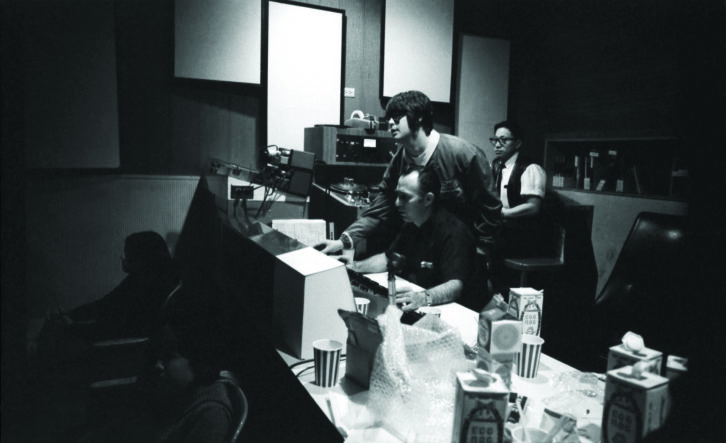
Martin’s guiding principle was to focus on what Wilson was originally looking to accomplish with each song. “What I do is respect what the artist was trying to create and get in their head, and then open it out a bit more so there’s a soundfield you can move into,” he said. Doing that, however, was a relative process: “It’s a bit like hitting mono with a toffee hammer, and it’s shattering around you slightly. You have this center field and you can then afford to have the immersion around you. Manny Marroquin, who’s a great mate of mine and a fantastic mix engineer—he’s way better than I am—we talk about this and we said the great thing about this format is it does give you room to open out the frequencies.”
Martin had a basic game plan he applied to each song. “Essentially the instrument tracks are three tracks and they’re left, center, right and that’s going to horseshoe around you with a lot of the backing vocals further back while the vocals are front and center,” he explained, adding later, “You have to be careful when you’re expanding out that you don’t fragment things too much, that it doesn’t sound too dissipated and not direct enough. That’s always the challenge with this.”
Fun, Fun, Fun on Pet Sounds’ 50th Anniversary Tour
While attributing most of his mix strategy to instinct, he joked, “Technically wise, I’d like to blind you with science but I’m too stupid to do that. It really is a question of sometimes I’m using a bit of ADT [Artificial Double Tracking] and stuff to widen images; I’m using the fact that we have height now; we can even put you in the same room as the band—and the thing about this is it’s a very natural record. It’s natural people doing unnatural things…. There’s a lot of bleed on the tracks; it’s a lot like being front and center with this amazing band playing in front of you.”
Adding to the sense of being in the studio with Wilson’s army of session players, The Wrecking Crew, was the fact that the drums were unusually miked. “There doesn’t seem to be a drum kit on this record at all,” Martin exclaimed. “There’s no tracks with drums on their own. There’ll be a kick drum with other instruments and a snare drum with other instruments, so it’s almost like orchestral percussion as opposed to a drum kit. If there’s a snare that I put in the center, the snare will have other instruments on it.
“For instance, ‘Wouldn’t It Be Nice’ has snare and saxes together, and that’s in the center channel. There’s some drums, bass, tambourine and glockenspiel on the left-hand side, and tack piano, keys and guitars on the right-hand side—and the Crew are playing all that live. I think just from a point of balancing, even though they were making mono, they separated them just so they could balance them in the mix.
“That’s the most incredible thing about this, and you hear it on the record: You can’t replace the sound of people in a room and genius in a room…. What makes this record is the performance, and we kind of take that for granted, which is a good thing because that’s what Brian wants. You’re meant to listen to a song, and the song is meant to make you feel something. That’s the whole point of why we do this, but what is underneath that is the work of great artists performing in a room.”
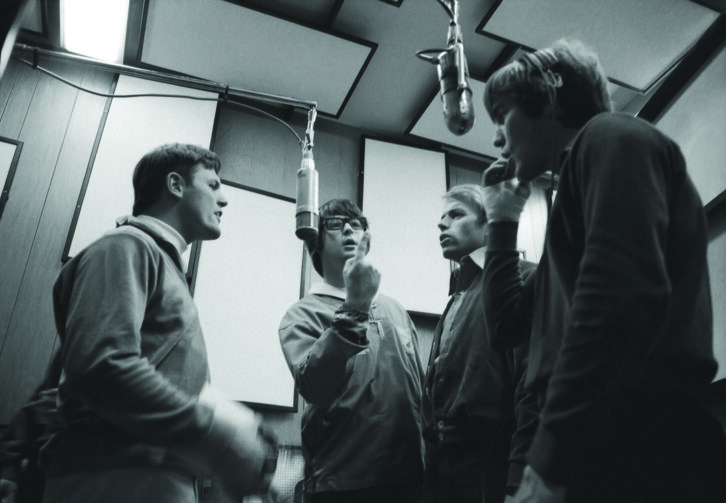
While “Wouldn’t It Be Nice” is arguably the best-known song on the album, it also proved to be the most difficult to bring into the Atmos realm: “That track, funnily enough, it’s a bit more shambolic than the others; you pull it apart and you hear the shambles, whereas everything else is very precise. With all due respect to how the track is, it’s just made for mono.” That said, Martin’s Atmos mix cannily uses that mono factor to its advantage, as the song pleasantly rolls along with a front-focused mix until the backing vocals kick in behind the listener with the second verse, making the entire track bloom with new life; it’s the musical equivalent of watching The Wizard of Oz change from Black and White to Color.

Despite a strong track record of remixing classic albums in Atmos, Martin admitted to being intimidated by the responsibility of reinterpreting Pet Sounds. “When you work on these records, there are moments—like ‘God Only Knows’ is one of my favorite songs, and I have that view of ‘This should not be touched, and maybe especially by me.’
“Already there’s an impostor syndrome with me and the Beatles stuff; there’s a double imposter syndrome with me doing The Beach Boys, especially an album of this scale,” he said, “but in all honesty, when you’re working on a track, you can’t think about these things. I’ve learned from the people I’ve worked with—there is a reason you’re there. There has to be an arrogance involved that’s going ‘They’ve asked me to do this; they want me to do what I do.’ There has to be that [mindset], but at the same time, you always think you might get your house burned down at some stage!”
Another way of looking at the new mix, he suggested, is for adamantly purist fans to see it for what it truly is: One mix among many. “People, if they like, they can listen to the mono, the stereo, or the Atmos version. I would never be as arrogant to say that I’d made the definitive version of Pet Sounds—what I’ve done is I’ve made a Dolby Atmos immersive version of Pet Sounds that hopefully people will love and enjoy.”

